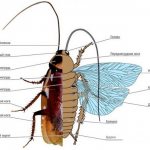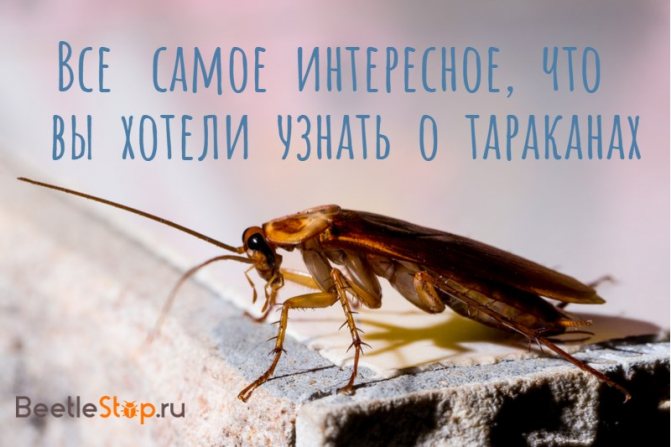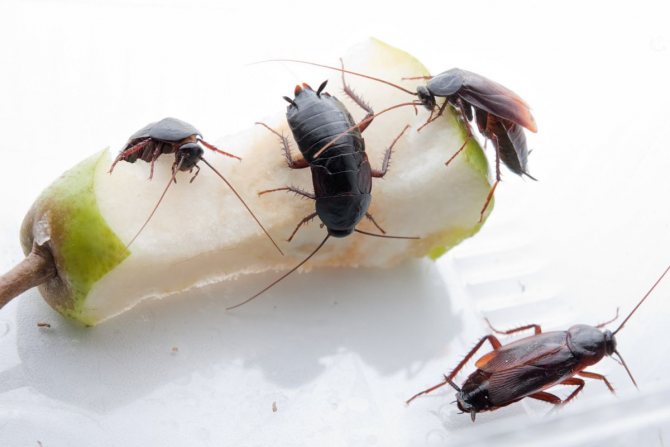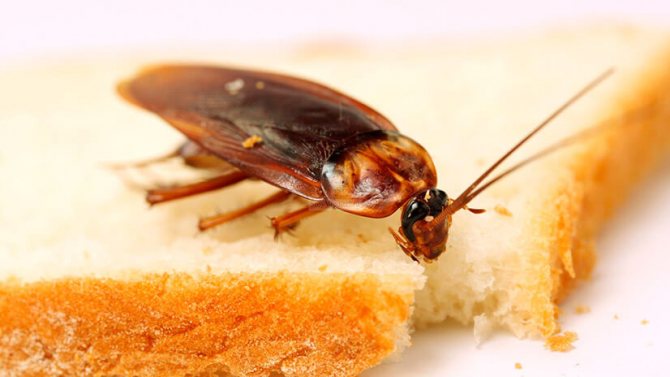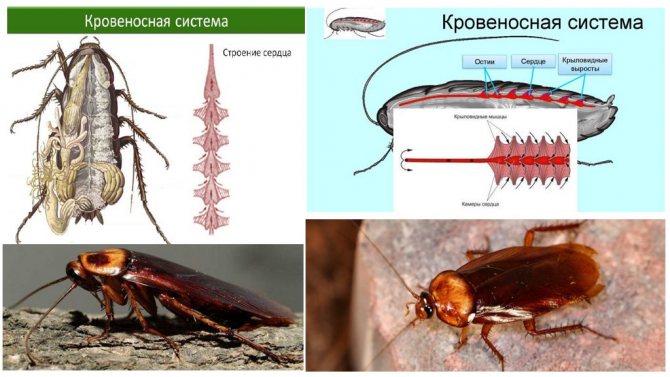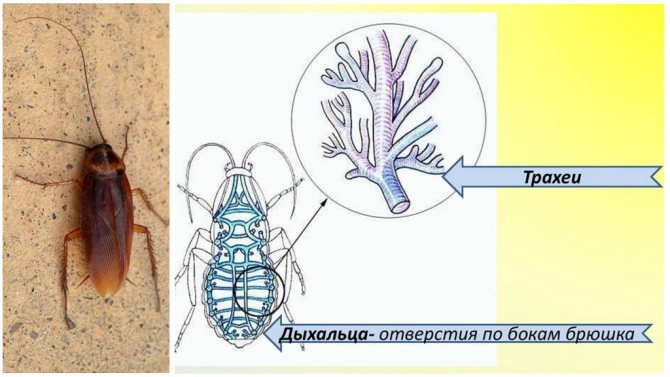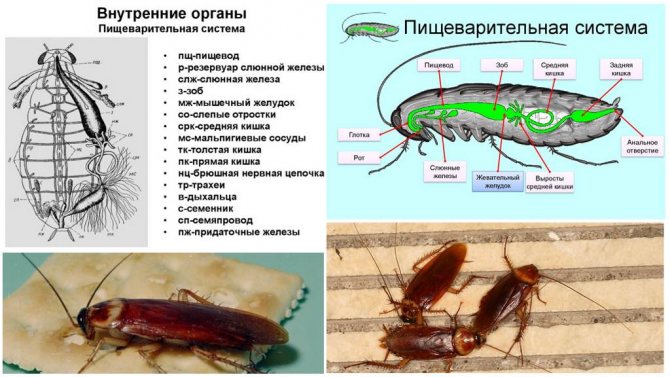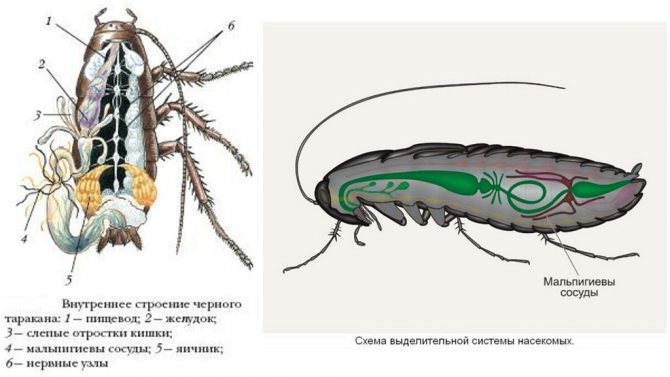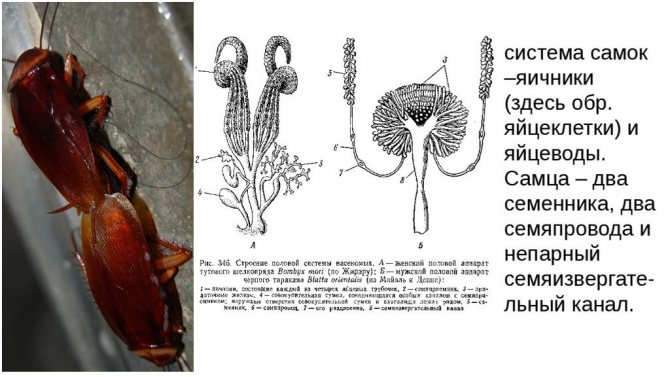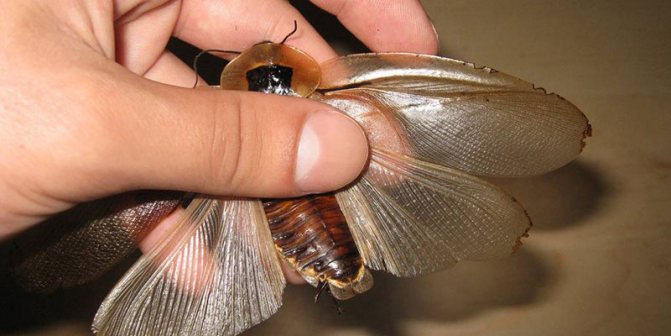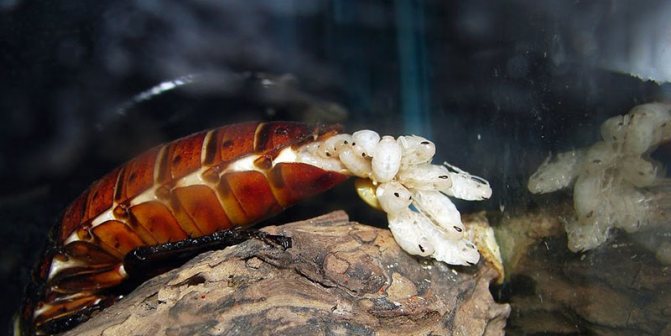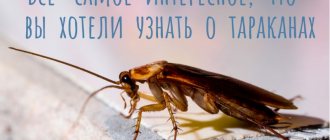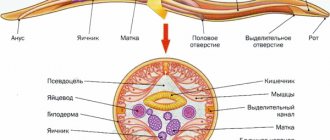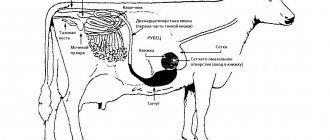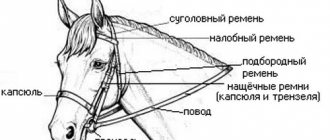Home Cockroaches What do adult cockroaches and their larvae look like?
Buy remedy for cockroaches "FAS"
The appearance of cockroaches
Almost everyone saw the pests living in houses and apartments. But not everyone will be able to distinguish one type of such insects from others. What do domestic cockroaches look like?
- What do adult cockroaches look like?
- What does the female look like after fertilization?
- What do the larvae look like?
- What do newly hatched cockroaches look like?
- What does an insect look like during molting?
External structure of cockroaches
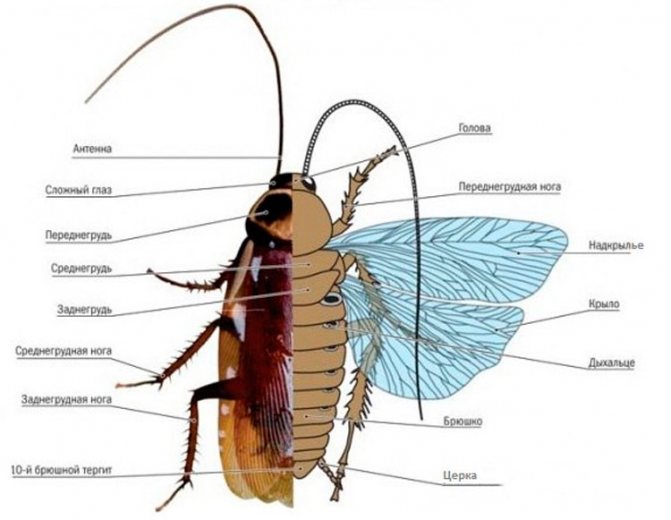
The order "cockroach" is quite numerous and has up to 7 and a half thousand species. In our territories, the most numerous is the red cockroach or Prusak, as it is also called. Black cockroaches are less numerous, while the American cockroach is a rather rare species. The structure of cockroaches, despite the species, is almost identical, although they differ in size and color.
Interesting to know! The structure of modern cockroaches practically does not differ from the structure of their ancient representatives of the order "cockroach-like", in the form of an ignaroblatt, which was found in fossils. Their size was 4 times the size of the Prussians, but at the same time they were smaller in comparison with modern giant cockroaches. Moreover, they were the most numerous representatives of this genus who lived within the ancient continent of Gondwana.
The structure of their body is considered to be quite perfect, so it is not surprising that these insects have retained all their basic qualities over many millions of years.
The cockroach has a flattened body, which allows it to penetrate through the narrowest cracks, while the body consists of 3 parts: head, chest and abdomen.
Popular message topics
- Mushrooms are parasites
Fungi parasites appear mainly on plants in order to get useful substances from them, while the plant itself noticeably weakens, becomes depressed. Parasites are a big problem in agriculture. - Household genre in art
When we talk about the genre of everyday life in art, we are talking about works in which the artist recreates everyday life, those social phenomena that surround him. Painting in the genre is also called genre painting. - Duck
The duck belongs to the class of birds, the order is anseriformes, the family is duck, the genus is waterfowl. Ducklings are one of the most numerous families of waterfowl. There are more than 150 varieties of them,
Head structure
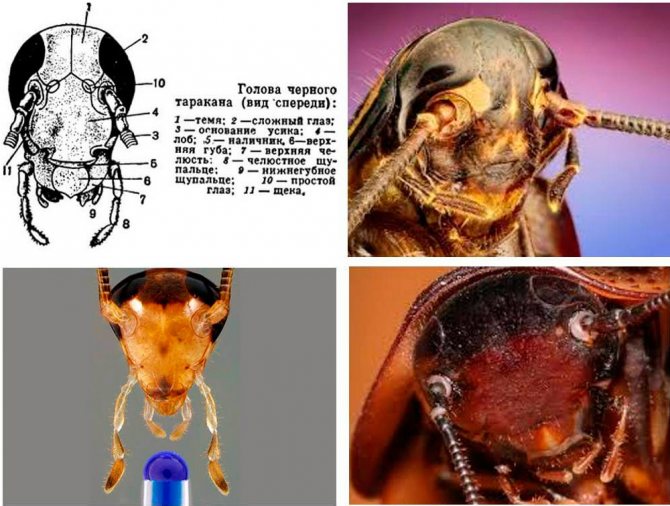

The cockroach's head is triangular in shape, while it is covered from above by a shield associated with the first segment of the chest. Therefore, you can see that only the back of the head looks out from under the shield, and the rest of the head looks down. Faceted eyes, consisting of 1800 fragments, are located on both sides of the head. As a result, the insect perceives all objects in the form of a mosaic made up of many colored pieces. The eyes of cockroaches are not designed for detailed study of objects, but at the same time, the color resolution of these insects is 5 times higher than that of humans.
Interesting fact! Due to the presence of faceted eyes, the cockroach is able to catch individual movements that follow with a frequency of at least 300 Hz.Therefore, he is able to see the movement of an object in slow motion, which helps him to dodge flying objects in a timely manner, such as slippers, for example.
In addition to these, one might say, compound eyes, on the front of his head there are 2 simple eyes, the functions of which have not been studied to this day. Experts say that thanks to these simple eyes, the insect is perfectly oriented in the dark.
The cockroach's long whiskers serve as organs of touch, smell and temperature determination for it. Whiskers differ in that they have nerve processes that constantly send signals to the central nervous system of the pest. With the help of whiskers, insects contact each other, while they can transmit and perceive the necessary information. After each molt, the whiskers in individuals grow by 1 segment, so you can determine how old the cockroach is. An adult can have about 80 of them, but this does not mean that the cockroach is 80 years old. Only specialists can calculate.
The insect's oral apparatus has a rather interesting structure, since each part of it is designed to perform separate functions. For example:
- The upper lip (lambrum) has a movable connection with the head and on its inner surface there are receptors that signal the composition of food.
- With the help of the lower jaw (mandible), the insect firmly holds food. The lower jaws look like curved plates on which sharp teeth are located.
- With the help of the upper jaws (maxillae), the insect chews, grinds and grinds food. They are located above the lower jaws and are armed with chemoreceptors.
- The lower lip (labium) covers the mouth opening from below and consists of several parts. Thanks to the presence of this lip, food particles do not fall down. In addition, there are taste and tactile receptors on the lower lip that help to find food and analyze its origin.
- In the oral cavity there is a salivary gland and something similar to a tongue, thanks to which cockroaches drink water.
It is believed that the oral apparatus of these insects has not undergone significant changes over such a long period of their existence.
Dangerous roommates
We must not forget that the mustachioes are able to bring pathogenic bacteria, viruses, protozoa, eggs of parasites into the apartment from places of unsanitary conditions. Neighborhood with these insects is dangerous for helminthiases, intestinal infections, allergies, bronchial asthma. There are also known cases of human bites by cockroaches.
Therefore, at the first signs of an invasion of these insects, measures should be taken to combat them. Measures must be taken very quickly, as the baleen reproduce even faster. Fortunately, now there are many effective anti-cockroach remedies on the market.
Thoracic region and the purpose of the legs
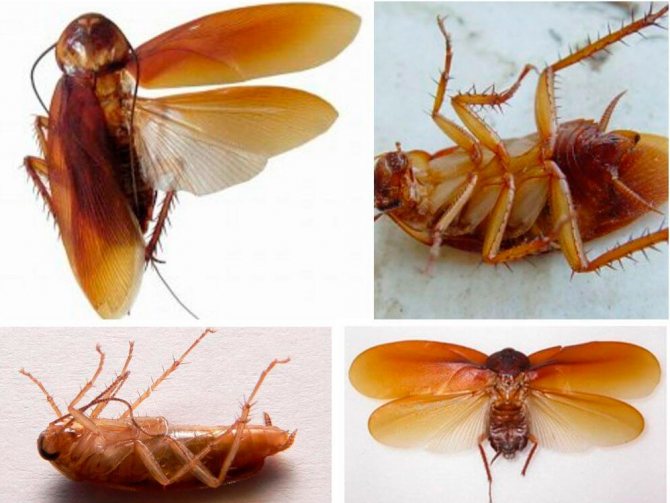

On the chest part of the cockroach's body are wings with elytra, as well as insect legs. Cockroaches, like any representative of the "insect" class, have 6 legs, that is, 3 pairs. Each paw is located on one of the segments of the thoracic region and represents:
- Prothoracic feet, which are the shortest and act as "brakes" if the insect moves too fast.
- Mid-pectoral paws that are able to move to either side, providing the insect with high maneuverability.
- The hind legs are designed to move the insect forward only. They are the longest in size.
The cockroach paw is a rather complex mechanism, which includes 5 segments. The thighs, flattened in shape, are armed with spines from below. The first 4 segments are armed with pads, and the fifth with claws with a suction cup located in the center. This allows the insect to crawl, both on horizontal and vertical surfaces.
Interesting fact! The presence of long (relatively) legs helps the cockroach not only run fast, but also jump high. In addition, with the help of all 3 pairs of limbs, the cockroach takes care of itself from the head to the very abdomen.
In other words, the insect uses 3 pairs of its legs for its intended purpose. Cockroaches are capable of moving along the surface at a speed of about 4 kilometers per hour. If the cockroach grew to the size of a cheetah, it could easily overtake it. With the help of sensitive hairs located on the legs, the cockroach assesses the situation around it. In 1 minute, he is able to change his trajectory up to 30 times.
Here, on the thoracic region, wings with more rigid elytra are also attached. With the help of the length of the wings, you can determine the sex of individuals: in females, the wings are much shorter. These insects use their wings during the mating season, as well as when moving or falling. By spreading their wings, individuals demonstrate readiness for mating. Despite the presence of wings, cockroaches cannot fly, although there is one species that lives in South and Central America that can fly.
Exotic insects menu
By the nature of their diet, exotic cockroaches are usually herbivorous. In nature, they feed on eucalyptus leaves, another plant food. At home, they use as feed:
- Apples, ripe bananas.
- Vegetables: carrots, tomatoes and beets.
- Various cereals and cereals from them.
- Flour products and bran.
It is also necessary to periodically feed exotic cockroaches with animal feed, chopped cottage cheese.
Before compiling the diet, the type of insects that are bred at home are taken into account, which do not eat certain species.
We offer you to familiarize yourself with Treatment of trichopolum in women
Insects from Madagascar are not given dog food as it shortens their lifespan. For marble insects, it is useful, as it includes certain substances and components.
Abdomen: structural features
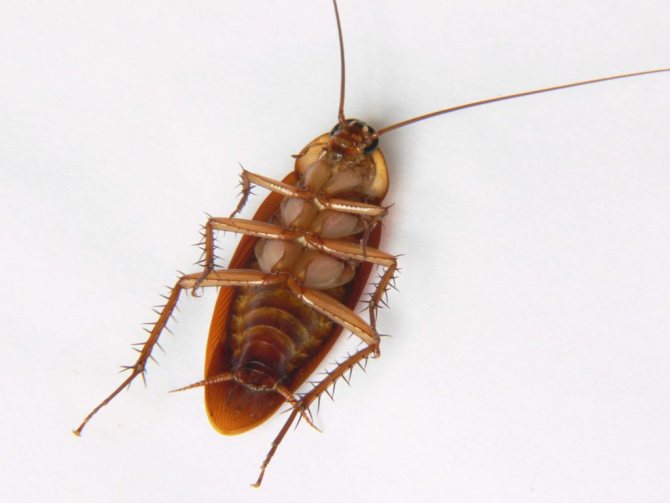

A maximum of 9 abdominal segments can be distinguished, although in reality it consists of 11 segments. The anus is located on the tenth segment, and the last segment is formed by paired outgrowths that have no purpose, but represent a separate sign of a certain type of cockroach. These outgrowths have survived for millions of years, indicating their relict origin.
At the end of the abdomen, the female has a special capsule (ooteca), which contains 12-16 eggs, and the larvae that were born later develop. Under favorable conditions (the presence of water and food), this capsule appears in the female every couple of days.
Interesting to know! In the process of growth and development, not only the size of individuals changes, but also their weight, which at the beginning of development is about 2 mg, and at the end of the process about 8 mg. Larvae, in comparison with adults, do not have wings, cerci and spines on their legs, but they have short antennae. After the fifth molt, insects have genitals and a complete external resemblance to adult cockroaches.
According to professor at the University of Massachusetts J. Kankel, cockroaches are endowed with basic driving instincts such as hunger, thirst, survival and reproduction. In order to understand whether cockroaches have a brain, you should study its internal structure.
Internal organs of a cockroach
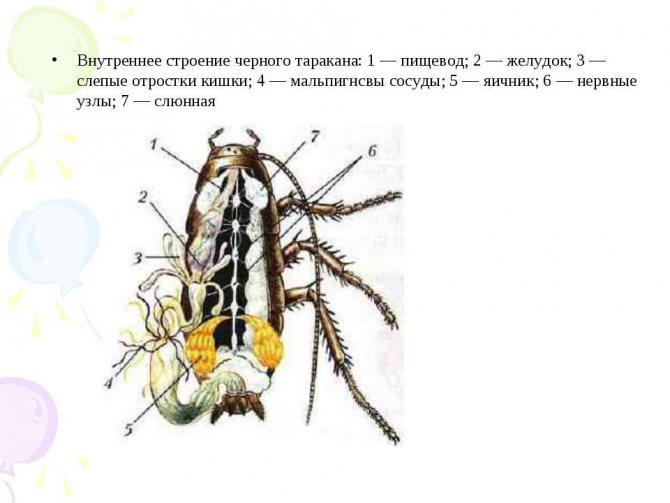

According to some claims, a headless cockroach can survive for several days. Such opportunities are associated with the structure of the nervous system and other organs, which allows the cockroach to live without a head.
The structure of the nervous system
The central nervous system of a cockroach is formed by 11 independent nerve nodes (ganglia). In the head of the insect there are only 2, but large, nerve nodes.They are located under the pharynx and above the pharynx, while they are responsible for the actions of the eyes, whiskers and probes located on the lips of the cockroach.
The 3 thoracic nodes, together with the suboesophageal, control the work of the oral apparatus, the wings, paws and muscles of the head, as well as the muscles of the thoracic region.
In the belly of the insect there are six small nerve nodes, with the largest of them the terminal, which is responsible for the functions of the genitals and sensitive cerci.
An important point! The internal structure of a cockroach is such that it can well do without a head, especially since its breathing is not associated with nerve nodes located in the head. There is no pressure in his circulatory system, so he does not bleed. At the same time, he does not waste energy, being in immobility, therefore, he can easily do without food. Under certain conditions, he can live without a head for up to 1 month.
The nerve fibers of the cockroach are connected with all organs of the insect, including the sensory organs. The cockroach not only has unique vision, it also has excellent hearing. Insect auditory receptors are located near the anus.
Circulatory system
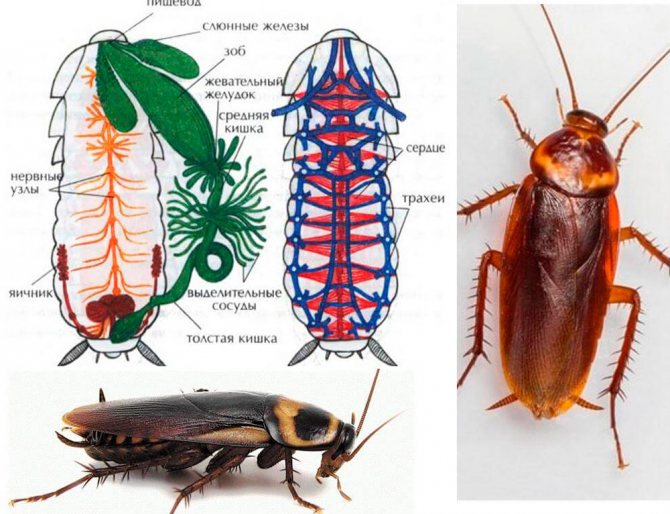

The circulatory system is characterized by an open type, while the blood of a cockroach is white and washes all the internal organs, being in free circulation. The heart of the cockroach is a tubular organ located in the dorsal pericardium. The intestines are located in the middle sinus, and the nerve cord is contained in the thoracic sinus.
Due to the work of the tubular organ, the hemolymph (blood) is pumped through the circulatory system. The work of the heart is carried out due to the pressure drops that appear as a result of the work of the muscles. Blood is pumped slowly, so cockroaches are quite sensitive to changes in ambient temperature.
Respiratory system
On both sides of the abdomen are tiny spiracular holes through which the insect breathes. There are 10 pairs of them, which means that on each side of the abdomen there are 10 such spiracles. A whole system of tubes - tracheoles - departs from these holes, which eventually connect to 3 pairs of several large tracheal trunks. Oxygen enters all organs by diffusion.
An important fact! Cockroaches are able to hold their breath for up to 40 minutes, blocking the spiracles, which allows the insect to survive in difficult habitat conditions.
As a rule, a cockroach, being in a stationary state, practically does not expend energy. It is believed that they are in a state of movement for only 25% of their lives, so cockroaches are also considered the laziest insects.
Digestive system
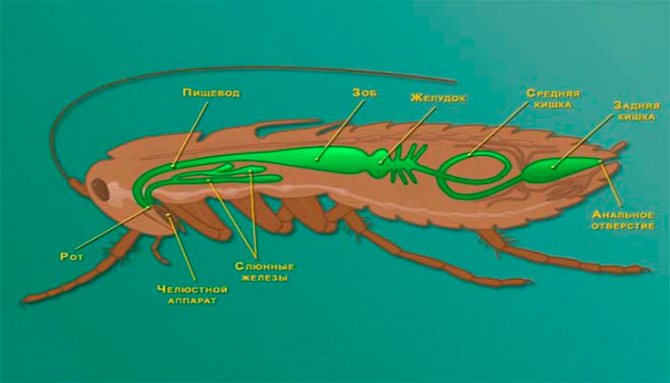

Food, falling into the cockroach's mouth, is moistened with saliva (before that it is crushed) and enters the goiter through the esophagus, after which it is sent to the muscular stomach. Therefore, the process of food digestion begins in the goiter and ends in the stomach. After that, the food enters the intestines, which consists of the anterior and posterior intestines.
An interesting moment! The foregut consists of several parts. Immediately behind the mouth opening is a buccal chamber with 6 teeth. With their help, the insect additionally crushes food that has entered its mouth.
In the intestines of the cockroach there is a full set of bacteria and fungi that help the insect to digest food objects, including even inedible food of inorganic origin.
Feces and urine are excreted through one anus. The urine is collected through special channels. They collect toxins dissolved in water throughout the body and send them to the anus.
Reproductive system
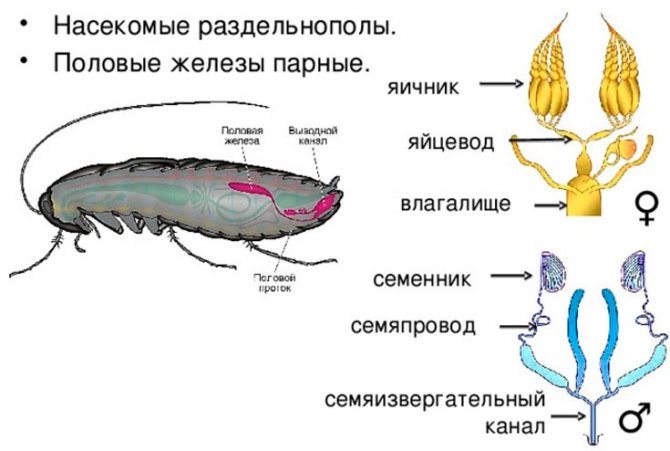

Males have a rather complex reproductive system. For example:
- Testes are located in 4-6 segments of the abdomen.
- The reproductive system includes a fungal (utricular) gland.
- The seminal vesicles flow into this gland.
- There are also copulation organs.
- The female reproductive system is no less complex and consists of:
- From ovaries, 8 avariols each.
- From a pair of oviducts that are connected to the vagina.
- From the genital chamber, where the eggs accumulate. And collateral glands are connected with this chamber, which secrete a special secret for the formation of a capsule (ooteca).
- From the ovipositor.
After fertilization, a capsule is formed into which the fertilized eggs enter.
An important point! The human cell nucleus includes 46 chromosomes, which are responsible for the transmission of hereditary information. Cockroaches have 48 of them, although this is by no means evidence of the unique complexity of their bodies. Similar (relict) insect species are distinguished by a large number of chromosomes.
According to scientists, cockroaches are more primitive, but the presence of 2 extra chromosomes indicates that the insects are quite resistant to external manifestations. It was this factor that turned out to be fundamental, ensuring the survival of the species for millions of years.
Water needs
A common method of controlling household pests is by cutting off access to food and water. If everything is implemented correctly, then it will not be difficult to cope with insects. After all, the life expectancy of cockroaches without water does not exceed 2.5-3 days.
In order to realize everything, the tightness of pipelines and taps is restored. After washing dishes and wet cleaning, all surfaces are thoroughly wiped. Indeed, to maintain normal life, they need a minimum amount of fluid.
Since moisture constantly accumulates in the basement, it is problematic to cope with insects in such conditions. In this case, other methods are used.
Information about the diet of insects is necessary for people who breed exotic cockroaches. It is no less important for those who fight them. Indeed, their lifespan depends on the correct selection of products.

